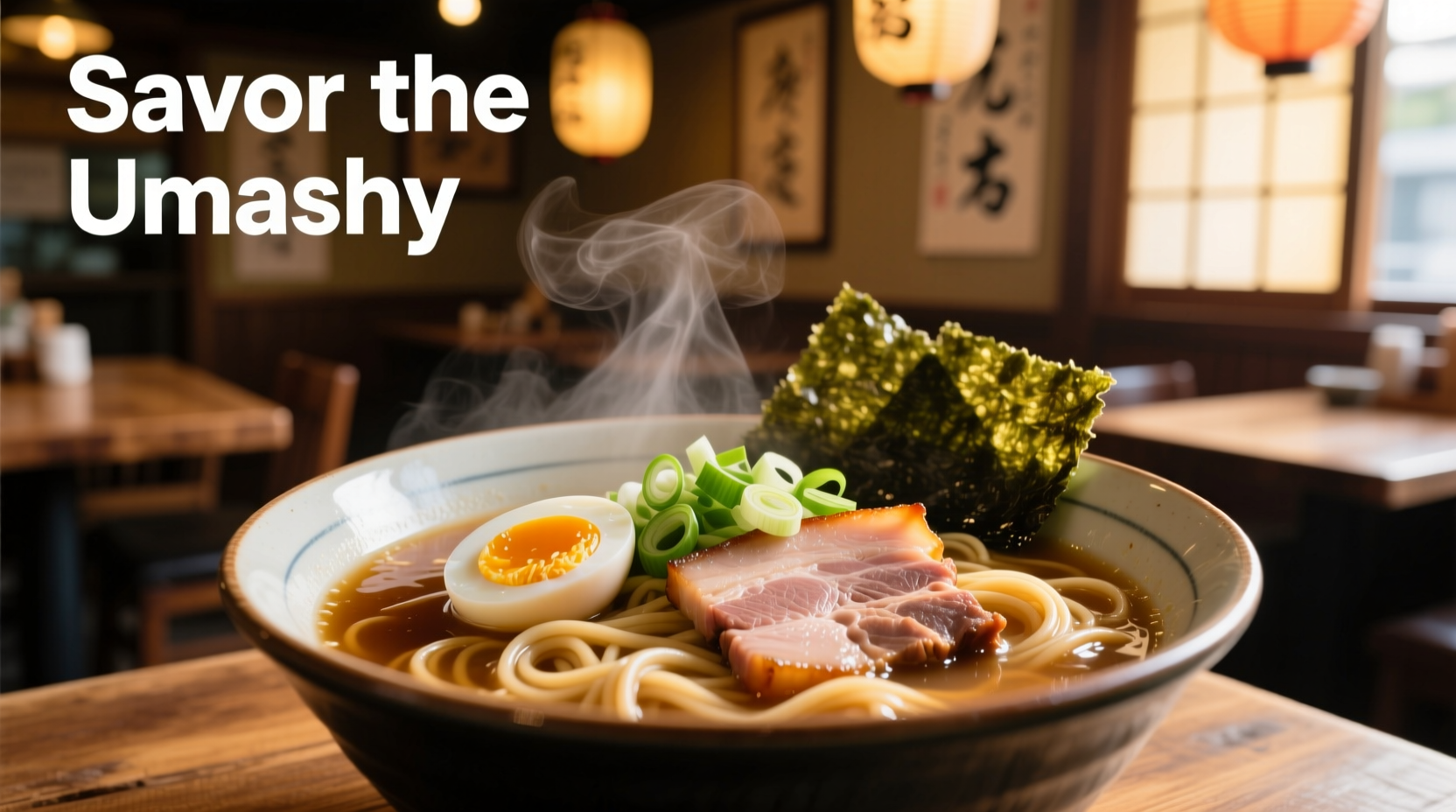Savory food forms the backbone of countless global cuisines, delivering that deeply satisfying "mouthwatering" quality that keeps you reaching for another bite. Unlike sweet treats that provide quick pleasure, savory foods create complex flavor experiences that engage your palate through multiple dimensions. Understanding this essential taste profile transforms how you approach cooking and flavor development.
Why Savory Matters in Your Daily Eating Experience
When you bite into a perfectly seared steak, savor a rich mushroom risotto, or enjoy a hearty bowl of miso soup, you're experiencing the power of savory flavors. This isn't just personal preference—savory represents one of the five basic tastes recognized by science, alongside sweet, sour, bitter, and salty. The savory taste, scientifically known as umami, triggers specific receptors on your tongue that signal satisfaction and fullness.
Food scientists have confirmed that umami-rich foods activate glutamate receptors, creating that distinctive "delicious" sensation that makes certain dishes so memorable. This biological response explains why traditional cuisines worldwide have independently developed techniques to maximize savory flavors through fermentation, aging, and slow cooking processes.
The Science Behind Savory Taste Explained
Umami, the Japanese word for "essence of deliciousness," was first identified in 1908 by Professor Kikunae Ikeda of Tokyo Imperial University. His research revealed that glutamic acid—the compound responsible for savory taste—exists naturally in many foods. This discovery completed our understanding of the five basic taste sensations that form the foundation of human flavor perception.
| Taste Profile | Primary Compounds | Natural Food Sources | Biological Function |
|---|---|---|---|
| Umami (Savory) | Glutamate, Inosinate, Guanylate | Aged cheeses, tomatoes, mushrooms, meats | Signals protein-rich foods |
| Sweet | Sugars | Fruits, honey, dairy | Identifies energy sources |
| Salty | Sodium chloride | Seafood, salted foods, vegetables | Maintains electrolyte balance |
| Sour | Acids | Citrus, vinegar, fermented foods | Detects ripeness/spoilage |
| Bitter | Alkaloids | Dark greens, coffee, chocolate | Warns of potential toxins |
This scientific understanding explains why combining savory ingredients creates flavor synergy—like when tomatoes (glutamate) and mushrooms (guanylate) amplify each other's umami qualities. Chefs leverage these natural chemical reactions to build complex flavor profiles without relying on excessive salt or artificial additives.
How Savory Differs from Salty and Other Taste Profiles
Many people confuse savory with salty, but they're distinctly different taste sensations. While saltiness comes specifically from sodium chloride and primarily enhances other flavors, savory represents a deeper, more complex taste quality that stands on its own. Think about the difference between salted crackers (salty) and a rich beef broth (savory)—both might contain salt, but only the broth delivers that satisfying umami depth.
The timeline of umami recognition shows how scientific understanding has evolved:
- 1908: Professor Kikunae Ikeda isolates glutamate from kombu seaweed and names the taste "umami"
- 1980s: Researchers identify specific umami taste receptors on the human tongue
- 2000: Umami officially recognized as the fifth basic taste by scientific community
- 2009: First umami-focused restaurant opens in New York City
- Present: Umami research expands into food science and nutrition applications
Everyday Examples of Savory Foods You Already Enjoy
You likely consume umami-rich foods daily without realizing their scientific significance. Common savory ingredients include:
- Fermented products: Soy sauce, fish sauce, miso paste, aged cheeses
- Matured ingredients: Sun-dried tomatoes, cured meats, aged balsamic vinegar
- Naturally rich foods: Mushrooms, seaweed, ripe tomatoes, asparagus
- Cooking techniques: Caramelized onions, roasted garlic, browned meats
When you slow-cook a tomato sauce until the flavors deepen, you're transforming simple ingredients into savory complexity through the Maillard reaction—a chemical process that creates hundreds of new flavor compounds. This explains why fresh tomatoes taste different from concentrated tomato paste, even though they come from the same fruit.

Practical Applications: Using Savory Principles in Your Cooking
Understanding savory isn't just academic—it transforms your cooking results. Professional chefs use specific techniques to maximize umami without relying on processed ingredients:
Build flavor foundations: Start soups and sauces with aromatic bases like onions, garlic, and celery (mirepoix) that develop complex flavors when slowly cooked. Add umami boosters like tomato paste or dried mushrooms at this stage for maximum impact.
Create layered seasoning: Rather than adding all salt at once, incorporate savory elements throughout cooking. Deglaze pans with wine or broth to capture browned bits (fond), which contain concentrated flavor compounds.
Balancing flavors: Savory dishes often benefit from small amounts of contrasting elements—a splash of vinegar in a rich stew or a pinch of sugar in tomato sauce helps highlight the savory notes without making the dish taste sweet or sour.
When Savory Isn't Appropriate: Context Boundaries
While savory flavors enhance many dishes, understanding their limitations prevents culinary missteps. Certain contexts where savory elements might not work well include:
- Desserts: Savory ingredients typically clash with sweet applications unless carefully balanced (like salted caramel)
- Fresh fruit preparations: Umami-rich ingredients overwhelm delicate fruit flavors
- Light summer dishes: Heavy savory elements can make salads and cold dishes feel overly substantial
- Certain beverages: Savory notes rarely enhance most fruit juices or light teas
The key is recognizing when savory elements enhance rather than dominate a dish. As culinary expert Antonio Rodriguez explains, "Mastering savory means understanding when to let it shine and when to let other flavors take center stage. It's about balance, not dominance."
Common Misconceptions About Savory Food
Several myths persist about savory flavors that can confuse home cooks:
Myth: Savory means "not sweet"—Reality: Many savory dishes contain small amounts of sugar to balance flavors, while some sweet dishes incorporate savory elements (like sea salt on chocolate).
Myth: Umami requires special ingredients—Reality: Common pantry staples like tomatoes, cheese, and mushrooms deliver natural umami without specialty products.
Myth: Savory equals high sodium—Reality: You can create deeply savory dishes with minimal salt by leveraging natural glutamate sources.
Developing Your Savory Palate
Training your palate to recognize and appreciate savory flavors takes practice but yields immediate cooking benefits. Try this simple exercise: taste identical portions of tomato sauce, then add small amounts of different umami boosters to separate portions (Parmesan cheese, soy sauce, dried mushrooms). Notice how each ingredient transforms the flavor profile without making the sauce taste like the additive itself.
This sensory training helps you understand how professional chefs create depth in dishes without relying on excessive salt or artificial flavor enhancers. As you develop this awareness, you'll naturally gravitate toward cooking techniques that maximize natural savory qualities in your ingredients.
Practical Savory Flavor Combinations to Try
Experiment with these scientifically backed savory pairings that leverage flavor synergy:
- Mushrooms + Onions: Slow-cooked together, they create complex new flavor compounds
- Tomatoes + Parmesan: Glutamate in tomatoes amplifies cheese's umami
- Seaweed + Fish: Traditional Asian combination maximizing natural glutamate
- Miso + Garlic: Fermented soy paste enhances garlic's natural savory qualities
These combinations work because they contain complementary umami compounds that multiply each other's effects—a principle food scientists call "umami stacking." Understanding this concept helps you create restaurant-quality depth in home cooking.











 浙公网安备
33010002000092号
浙公网安备
33010002000092号 浙B2-20120091-4
浙B2-20120091-4